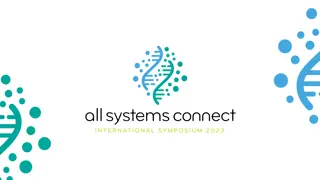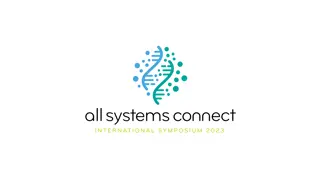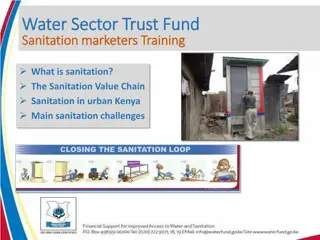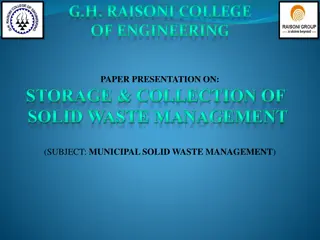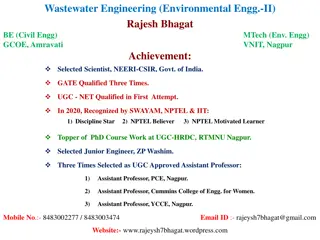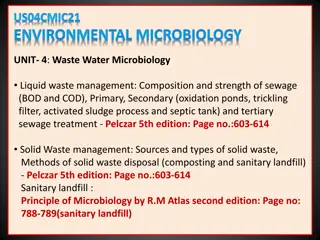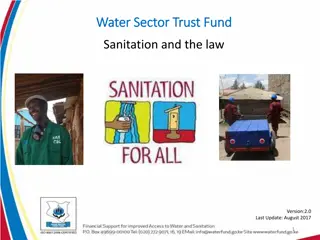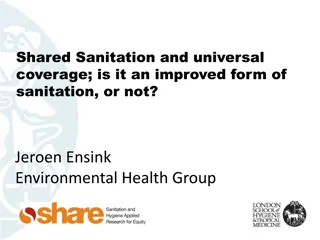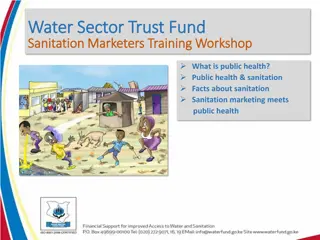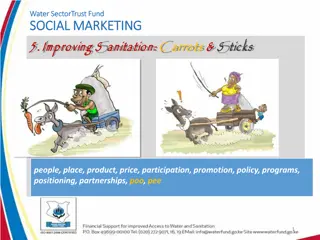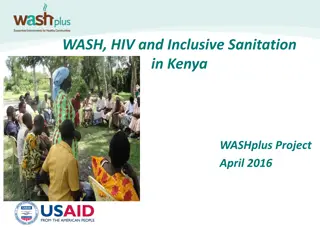Understanding Sanitation: Promoting Health Through Proper Waste Management
Sanitation is essential for promoting health by preventing human contact with hazardous wastes and ensuring proper waste treatment and disposal. Hygienic practices, treatment facilities, and personal hygiene all play vital roles in maintaining sanitation. The World Health Organization defines sanitation as the provision of facilities and services for safe waste disposal, encompassing various aspects such as improved sanitation, on-site sanitation, environmental sanitation, and ecological sanitation.
Download Presentation

Please find below an Image/Link to download the presentation.
The content on the website is provided AS IS for your information and personal use only. It may not be sold, licensed, or shared on other websites without obtaining consent from the author. Download presentation by click this link. If you encounter any issues during the download, it is possible that the publisher has removed the file from their server.
E N D
Presentation Transcript
Water Sector Trust Fund Water Sector Trust Fund Sanitation Team Training workshop Sanitation Team Training workshop What is sanitation? The Sanitation Value Chain Sanitation in urban Kenya Main sanitation challenges Your role in sanitation Version:2.0 Last Update: August 2017 1
Introducing sanitation? According to you, what is Sanitation? 2
What is sanitation? Sanitation is the hygienic means of promoting health through prevention of human contact with wastes as well as the treatment and proper disposal of waste Hazards disease. Wastes that can cause health problems include human and animal faeces, solid waste , domestic wastewater agricultural wastes can be agents of and 3
Sanitation, continued Hygienic prevention can be by using solutions such as treatment facilities (e.g. sewerage wastewater treatment) or simple technologies (construction of toilets), or even by personal hygiene practices (e.g. simple hand washing with soap and water ) means of and 4
Sanitation, continued According Organisation (WHO): to the World Health Sanitation generally refers to the provision of facilities and services for the safe disposal of human urine and faeces. The word sanitation also refers to the maintenance of hygienic conditions, through services such as garbage collection and wastewater disposal 5
What is sanitation? The term "sanitation" is applied to a wide range of subjects such as: Improved sanitation - refers to the management of human faeces at the household level. On-site sanitation - the collection and treatment of waste is done where it is deposited. Examples are the use of septic tanks or dry toilets (particularly in rural areas) 6
What is sanitation? The term "sanitation" is applied to a wide range of subjects such as: Environmental sanitation - Activities aimed at improving or maintaining the standard of basic environmental conditions affecting the well-being of people. This include the control of environmental factors that form links in disease transmission such as solid waste management, water and wastewater treatment Ecological sanitation - an approach that recycles nutrients and water from human and animal wastes in a hygienically safe manner 7
The Sanitation Value Chain What do you understand from this poster? (Lets discuss this!) 8
What does the poster tell you about sanitation? 1. 2. 3. What opportunities did you see from the poster? 1. 2. 3. 9
Sanitation situation in urban Kenya Urban sanitation coverage figures % use 42.17 18.37 12.43 7.80 6.94 4.04 3.85 2.29 1.53 0.39 0.18 No. Facility 1. Traditional Pit Latrine 2. Improved Pit Latrine 3. Pour Flush Toilets 4. Toilet Linked to Septic Tank 5. Toilet Linked to Sewer 6. Public (Fee Paying) Facility 7. Other Sanitation Facility 8. Ventilated Improve Pit Latrine 9. Open defecation (OD) 10. Flying Toilets 11. Others (Biogas, UDT, Open Discharge Sanitation facilities and practice used in Kenya s urban low income areas (Source: MajiData)
Sanitation challenges in Kenya Main sanitation challenges are: Low access to sanitation at the household/plot levels Limited network of sewer systems Few water companies with functioning wastewater treatment plants Poor designs of toilets (see picture)
Sanitation challenges in Kenya Main sanitation challenges are: Lack of water Poor sanitation monitoring Urban low income areas were ignored by the government Lack of space in densely populated low income urban areas
How are such toilets in low income areas emptied? Any ideas??
This happens in a lot of low income areas Is this good? What are the risks?
What is your role in sanitation? (1) You will be part of an amazing group called the Sanitation Team You shall be the sanitation watch dogs for the health and the water sector to avoid illegal manual emptying We shall equip you with protective equipment that you require You shall only empty one type of toilet (UDDTs) where most of the treatment has occurred in the toilet
What is your role in sanitation? (2) We shall assist you with posters to market yourself in the low income areas thus increasing business for you We shall equip you with transportation equipment You shall also be involved in solid waste management in the plots that have the SafiSan toilets
What is your role in sanitation? (2) We shall guide you to register, get certified and authorized in the public health department and apply for license s at NEMA offices We shall create awareness within the communities about the importance of your work therefore there shall be no stigmatisation We shall advise you on the areas to dump the dry toilet waste
Thank You Let us succeed together! 24




